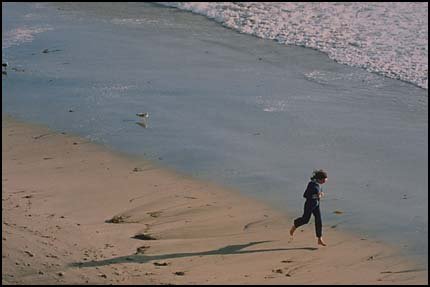The "rule of thirds" dictates the placement of the focus of your photograph. Why?
The rule should actually be called the "rule of the Golden Mean". Across cultures and history, designers such as artists and architects - and even composers and poets - have adopted the Golden Mean as a ratio that is pleasing to the human eye. Nobody is certain why, but a rectangle with sides in the ratio of 1:1.6180339887499... just seems to please the aesthetic sense of the human brain. Simply - it just looks good.
The ratio of height to width of the rule of thirds is 1:2/3 (or 2/3:1, depending on whether your photo is oriented down or across). This gives a ratio of 1.5. This ratio, however, is only an approximation of the Golden Mean, which is why the rule of thirds seems to work so well: it is building an approximation of the Golden Mean within the boundaries of your photo.
Almost mystically, the Golden Mean seems to be a naturally occurring number, like pi or e. The Fibonacci series of numbers starts with 0 and 1, then adds two numbers to produce the next in the series:
0
1
2
3
5
8
13
21
34
55
etc.
Now, if you take successive ratios of consecutive numbers in the Fibonacci series, you get ratios that more and more closely approach the Golden Mean as you use higher and higher pairs of numbers.
For this and other major number coolness, check out this Golden Mean Web site.
Sample Photos






Hi! I am a robot. I just upvoted you! I found similar content that readers might be interested in:
http://photoinf.com/Golden_Mean/Laurie_Nyveen/News_Photos_and_Layout.htm